Your path to tomorrow, today
![{[downloads[language].preview]}](https://www.rolandberger.com/publications/publication_image/tam_future_cover_en_download_preview.jpg)
The actions of the present lay the foundations for the future. What does this saying mean in turbulent times? Consider a mix of solidity and flexibility!
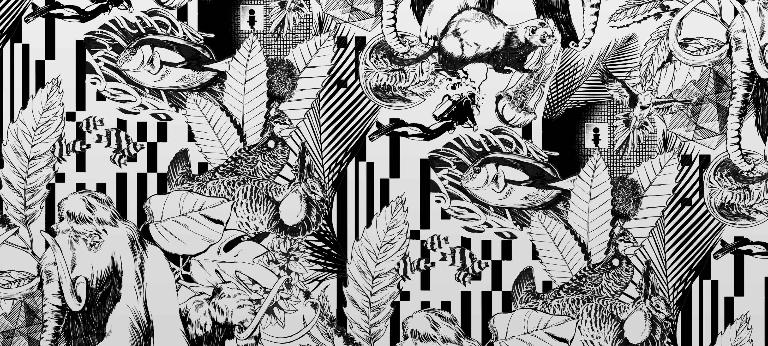


Imagine time as a stack of atmospheric layers that all move at their own speed – with nature as the slowest and commerce the fastest. Sounds crazy? Then take some lessons from the San Francisco-based think tank which is taking the very long view.
Tourists who find themselves wandering around historic Fort Mason, a former US Army base turned cultural site offering picture postcard views of San Francisco Bay, are invariably drawn into a narrow storefront that looks like a strange blend between a museum of oddities and a cool bar. They can gaze at the "Manual for Civilization," a crowd-curated, wall-to-ceiling library of essential books about science and the humanities, be mesmerized by the constantly changing "ambient painting" by musician and visual artist Brian Eno above the bar or sip a cocktail gathered around a large prototype for a mechanical clock designed to run for 10,000 years without human intervention.
The minds behind this gathering space called "The Interval" built this clash of indulgence and introspection on purpose. The idiosyncratic bar-cum-museum is the headquarters of the Long Now Foundation, a small but influential non-profit that for the past 23 years has been gathering curious minds to think about the long term – the really long term. So long term, in fact, that its members write years starting with a zero, as in 02019.
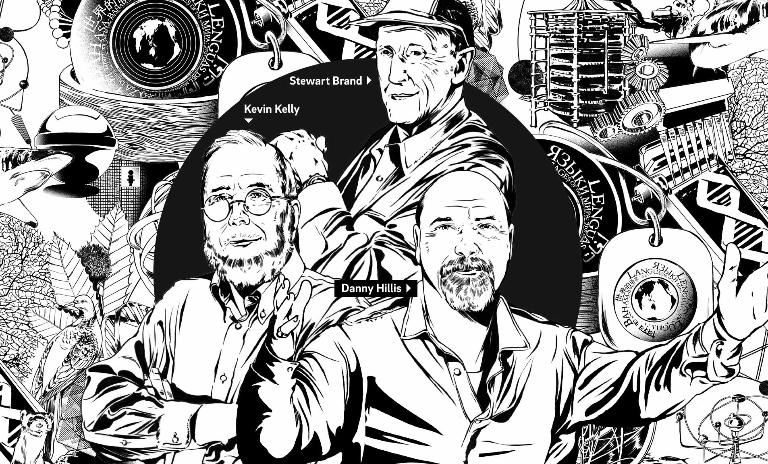
Launched by a small group of Silicon Valley thinkers and technologists concerned about the shortening attention span of the human species, Long Now has evolved into a unique organization which tries to look at progress and tech-infused civilization not in terms of centuries, but of millennia. With events, multimedia outreach and through a growing range of hands-on projects from biology to space travel, Long Now weaves together the most fascinating strands of historic perspectives, current research and often wild futuristic thinking, always trying to transcend disciplines across the sciences, arts and culture.
More than 10,000 members from 63 countries pay between $8 and $2,500 per year to attend gatherings in San Francisco or just to belong to this techno-utopian salon. "It's amazing, but we have two objects in space right now," says Laura Welcher, Long Now's director of operations, as she walks a visitor through the many activities of her organization. A trained linguist, she has been with the foundation for 15 years, working on the Rosetta Project to catalog and archive human languages in a digital library accessible to the public.
"Civilization is the most complicated machine we've built and we need to keep it going."
What began as a miniature disk containing more than 1,500 languages has grown into a constantly expanded online tool called PanLex to translate 25,000,000 words across 5,700 languages – and two tiny payloads that have made their way beyond Earth. The first Rosetta disk was sent up on a mission by the European Space Agency in 2004 and made a hard landing on the comet 67P in September 2016. The second disk furnished by Long Now hitched a ride aboard the Israeli lunar lander Beresheet in February 2019 before a main engine failure during an attempted soft landing in April of the same year led to loss of contact with mission control and what is assumed to be another crash landing.
For Welcher, the Rosetta Project is a perfect example of the broad and ambitious goals of Long Now. "If I had stayed in academia, I would have done a deep dive into a particular language or theoretical issue, but we're tackling big problems and big questions that really don't have a home in any other institution." By that, she means thinking about how humans can curate the data and information that make up our cultural legacy for many generations to come – and even for other civilizations that may one day stumble upon our artifacts. All that is done by a core staff of 10 people working in Fort Mason who draw on collaborators and volunteers from around the Bay as well as from around the world.
The star power of its founders and its board members makes up for what the small, San Francisco-based outfit lacks in funding and global reach. The organization got its start in the mid-90s when writer Stewart Brand, who gave the world the iconic counterculture magazine the "Whole Earth Catalog" and one of the first online communities, known as The WELL, joined intellectual forces with a couple of other forward thinkers: MIT computer scientist and AI pioneer Danny Hillis and Kevin Kelly, the founding executive editor of Wired, the monthly bible of the digerati. They were all concerned, recalls Kelly, with humanity's short attention span and toying with ideas to make people think in longer time frames. "It was a conjunction of several ideas and very Californian in its origin, namely Danny's idea to imagine and build a clock that would tick for a very long time and Stewart's idea of accumulating information you'd want to have for civilizations to work at scale for centuries." Kelly was immediately sold: "We took that very vague notion or sentiment we all shared and have spent the past decades to figure it out." Rounding out the core team are Brian Eno, who also gave the organization its name to describe the "longer here and now" as opposed to the fast-paced life he experienced in New York, and renowned Silicon Valley forecaster and Stanford professor Paul Saffo.
The team all subscribes to Brand's idea of pace layers to frame long-term thinking: Imagine time as a stack of atmospheric layers that all move at their own speed with the bottom layer of nature being the slowest and the higher layers of culture, governance, infrastructure, commerce and finally fashion moving ever faster. Get trapped in the ephemeral uppermost layer and you risk depriving humanity of a thorough and sustainable process to shape its long-term future. "Civilization is the most complicated machine we've built," says Kelly, "and we need to keep it going. We are trying to make more choices survive so future generations can later finish things."
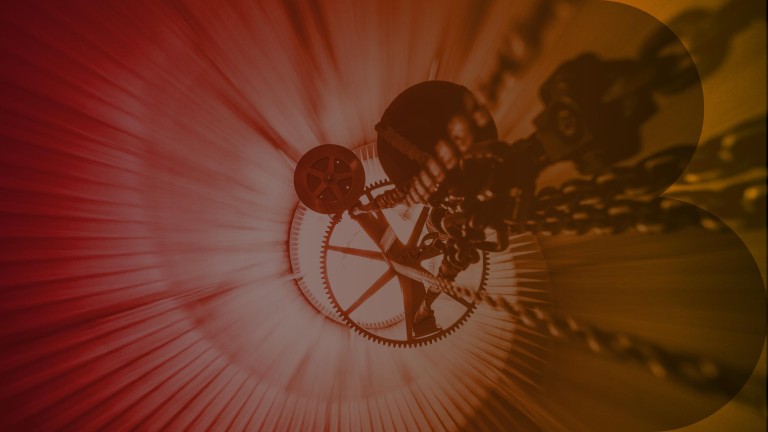
It's a message that the foundation has been broadcasting with both diligence and a dizzying array of speakers who hold "seminars about long-term thinking" in San Francisco, mostly hosted by 80-year-old Brand himself. If you took in the dozens of lectures and conversations held since 2003, you would learn about how longtime British Astronomer Royal Sir Martin Rees judges humanity's prospects, how urban growth follows a universal pattern, how Steven Pinker argues for a decline of violence and "what really happened on Easter Island."
"The idea of thinking in centuries and millennia can also be exciting for a third-grader."
The often sold-out seminars, followed online by thousands more around the world, don't have the pizzazz and large fanbase of a brief and well-rehearsed TED talk, but they are only one way the foundation wants to nudge fellow humans to think far ahead. Long Now is doing things for the long term as well. Its most ambitious undertaking is the 10,000 year clock that is finally being built in a remote mountain in Texas.
More recently, Brand's second wife Ryan Phelan has launched an endeavor to bring species back from the dead, what the entrepreneur calls "de-extinction." Revive & Restore relies on a network of nearly 200 scientists and conservationalists from around the world and targeted grants to develop a "21st century genetic rescue toolkit" for saving endangered species and even reversing extinction – from the lowly passenger pigeon to the woolly mammoth. What started out as a freewheeling workshop at Harvard in 2012 has matured into a non-profit tightly affiliated with Long Now and its core ideas. Donors have poured more than $4 million into its work so far to fund projects such as convincing the pharmaceutical industry to use a new synthetic product instead of draining 500,000 horseshoe crabs of their blood every year for the biomedical testing of batches of vaccines and IV fluids. Another experiment aims to genetically engineer inherited immunity in black-footed ferrets before they are entirely wiped out by a type of bubonic plague that primarily affects rodents. For Phelan, species loss is definitely not the final word since technological progress gives us new options. "If you have the DNA and you have a closely related species, you can keep them going, not just for today but for the next 10,000 years. This matters to conservation as the end game," she explains. "As an entrepreneur, I'm opportunistic and look for passionate scientists and white space where nobody's doing anything."
The excitement about perhaps bringing back the mammoth and sending language libraries into space needs to spread, however, and that is one aspect where Long Now's founders admit they need more focus on the short term in order to engage with the next generation and future-proof their work. "We're a bunch of guys, some women too, who have been around each other so long we can complete each other's sentences," muses Kelly, who turns 67 this year. Besides drafting a manifesto to be released later this year as a kind of guiding document for the next board, the group has been working on an educational program to make its often abstract and unwieldy ideas palatable to schools.
The extra zero in front of 1996 isn't a typo: It's a whole new way of thinking about time. For the last 23 years, Kevin Kelly, Stewart Brand and Danny Hillis have been reaching out to like-minded futurists to join them under the umbrella of the Long Now Foundation to help redirect and refocus humanity's attention span.
Tech entrepreneur and board member Kim Polese is at the center of that task. It's a tall order, she admits, since the modern education system still emphasizes preparing for and scoring well on a test over slowly exploring and understanding dependencies. "The short-term thinking disease is everywhere you look." To counter that, Polese and education consultant Andrea Saveri developed a series of small workshops that have reached upwards of 50 California teachers, from kindergarten to high school, since 2016. They heard about the tenets of long-term thinking at Fort Mason, brainstormed with the likes of Brand and Saffo and developed curriculum activities to take back to their classrooms. In total, Saveri estimates, 750 to 1,000 students have been exposed to long-term thinking so far. "The idea of thinking in centuries and millennia, not just the next year, can also be exciting for a third-grader if you present it as sensory-based storytelling," she explains. "Ask them what an organism feels, sees or hears that lives on a different pace layer, like a thousand-year-old bristlecone pine. They get it and they love it."
The organization is currently trying to evolve those first insights on how to engage children and teenagers into a set of online resources that teachers everywhere can use. But it needs funding and partners to spread the idea in a constantly accelerating world. "We need generations who grow up believing in long-term thinking," says Polese about what's ahead for the quirky "do-tank" as it prepares to turn 25. "If the next generation doesn't care about it, then what we're doing here is pretty useless."
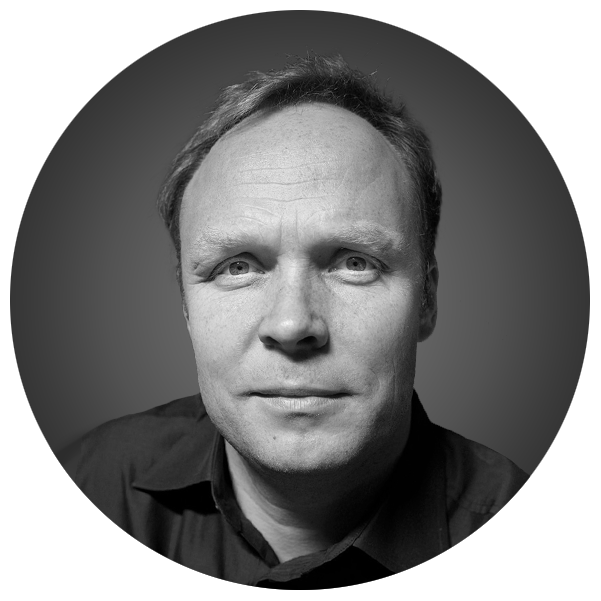
Thinking about the future really means thinking beyond our lifetimes.
"Longplayer" is a musical composition that has been playing since the beginning of the year 2000, and will play on, never repeating, until it reaches the point at which it first started, exactly 1,000 years later.
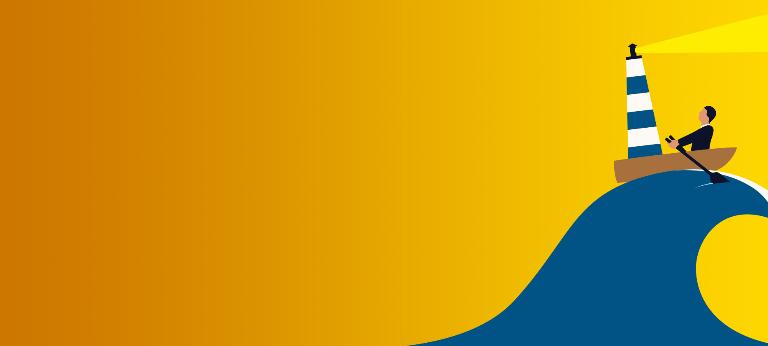
![{[downloads[language].preview]}](https://www.rolandberger.com/publications/publication_image/tam_future_cover_en_download_preview.jpg)
The actions of the present lay the foundations for the future. What does this saying mean in turbulent times? Consider a mix of solidity and flexibility!
Curious about the contents of our newest Think:Act magazine? Receive your very own copy by signing up now! Subscribe here to receive our Think:Act magazine and the latest news from Roland Berger.
